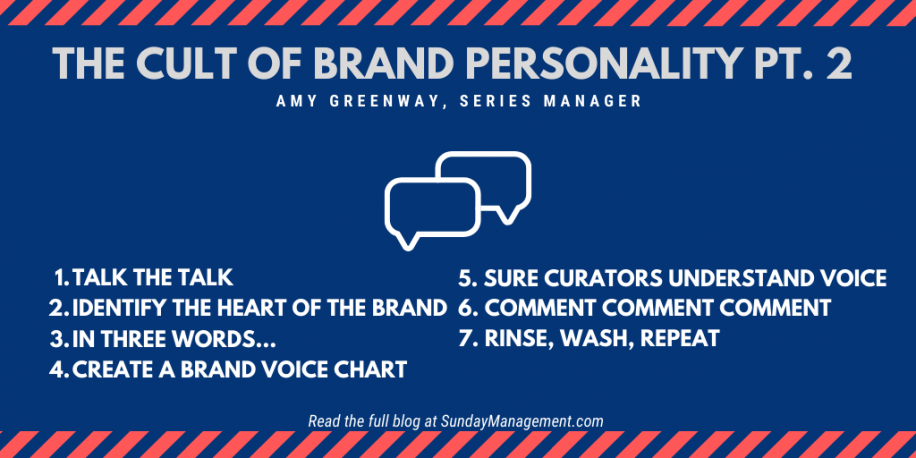The Cult of Brand Personality Pt. 2

Josh Hurley and Ernie Francis Jr. Take Trans Am Esports Wins in Barcelona
May 16, 2020
Trans Am Resurrects Riverside International Speedway for Esports Competition
May 26, 2020By Amy Greenway, Series Manager
Seven Keys to Brand Voice
Now that we can identify what a brand personality is and why it is important, knowing how to develop the right voice for your brand. When it comes to social media, having an established identity will make it easier to decide what kinds of content to post on various platforms.
In the spirt of social media, I want to share a Buzzfeed-style top-seven list of what brands can do to help identify their voice to better connect with customers.
1. Talk the Talk
Identifying the target audience, this point seems like a no brainer and something brands should have established before creating an online brand personality, but it’s constantly overlooked. For example, if the target audience falls into a younger demographic, using slang terms, emojis, memes and gifs to communicate the message is more relatable to that audience than using those same methods to connect with a more mature demographic. Talking how your audience does will turn a brand from just a brand to a “person.”
2. Identify The Heart of the Brand
Much like creating a mission statement, identifying the brand’s core (or heart to personify the brand) will help to create a brand personality and reinforce the brand’s beliefs.
What is the brand’s:
- Purpose
- Vision
- Mission
- Values
By identifying fundamental beliefs across content, advertising and social media posts, brands are able to create and maintain similar experiences. These recognizable actions help drive people through a marketing funnel. Identifying the brands purpose, vision, mission and values help brands not mix their messages and confusing their audience.
3. In Three Words…
Identify the brand in three words. Imagine the brand as if it were a person, how would you describe its personality to someone? What is the brands POD (point of difference not the early
2000s grunge rock band). How do these characteristics show up in audience communication?
How do they come across in the content?
Narrowing these traits down to three words will help focus the content that the brand is building to help communicate its personality.
4. Create a brand voice chart
Using the three words that were identified in the above exercise, use a brand voice chart to map out voice expectations. A brand voice chart outlines; voice characteristics (the three words), descriptions of each of those words and dos and don’t so if there are multiple people posting and curating content for a brand everyone is on the same page on what to expect.
5. Ensure Curators Understand Voice
The above exercise helps brand managers communicate to social media curators the expectations on what the brand voice and tone should look like visually and in copy.
For anyone who creates content or communications, walk them through the chart. This creates one cohesive voice no matter who is posting.
6. Comment Comment Comment
Like I mentioned before, each time a brand replies to a message, posts a status update or uploads a video, it’s pushing a brand voice.
Listening and monitoring messages gives allows brands the chance to make a real impressions on a customer. Increasing actions and availability can have serious payoffs and can really make the brand shine (maybe another POD).
7. Rinse, Wash, Repeat
A brand voice chart evolves and grows, just like a real-life person. As the brand grows, it’s good to take a look at the chart and refresh it.
Whew, that’s a lot just to make a brand look like a real person online. But, when these steps are applied successfully it can boost followers, engagement, brand loyalty and most importantly, sales.




